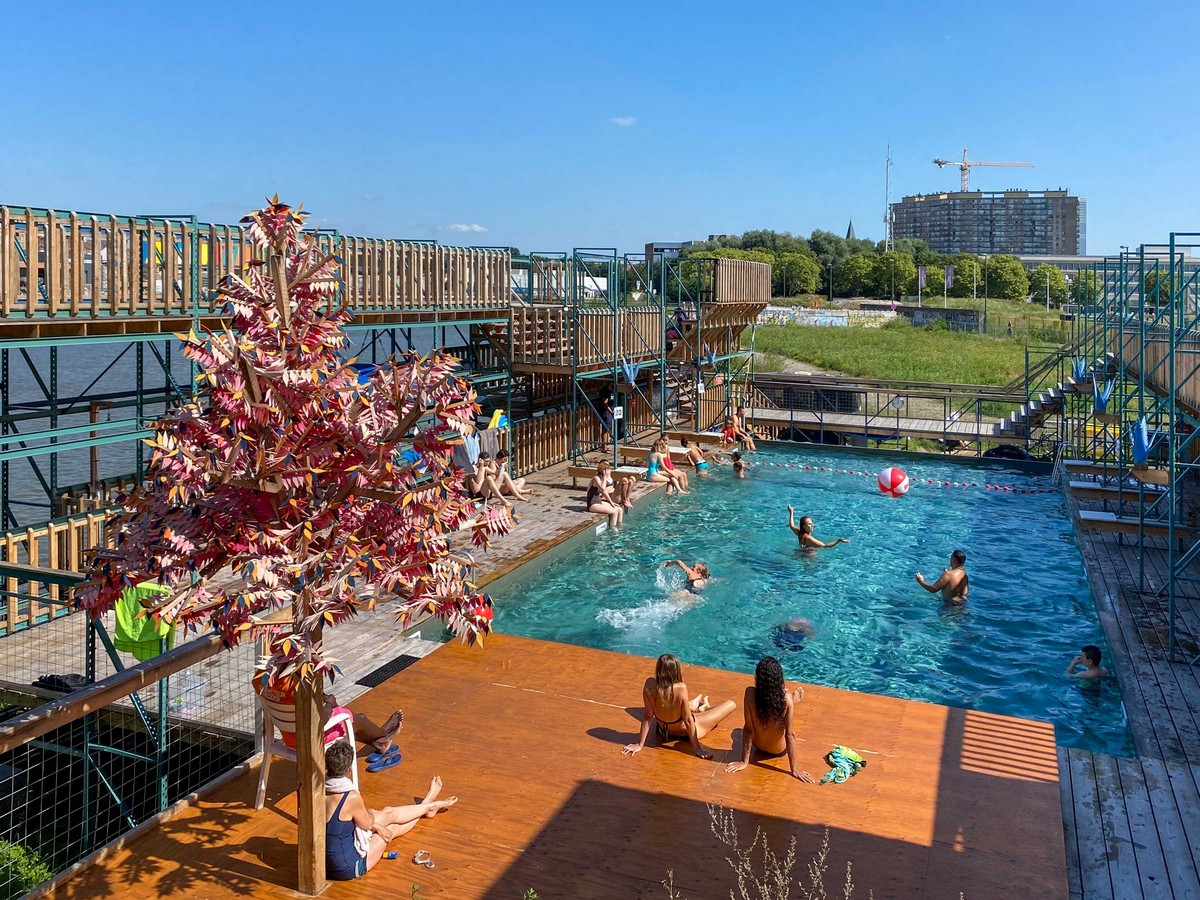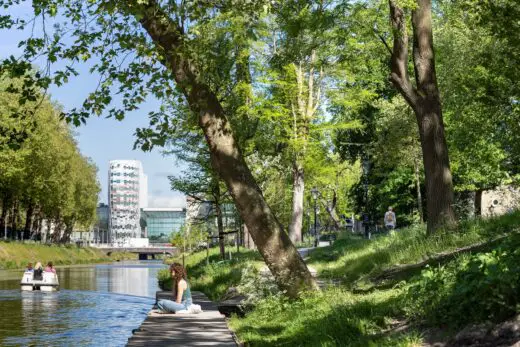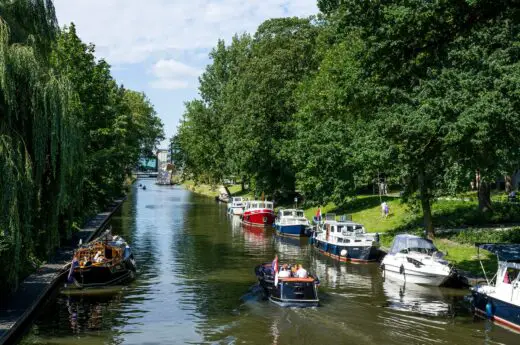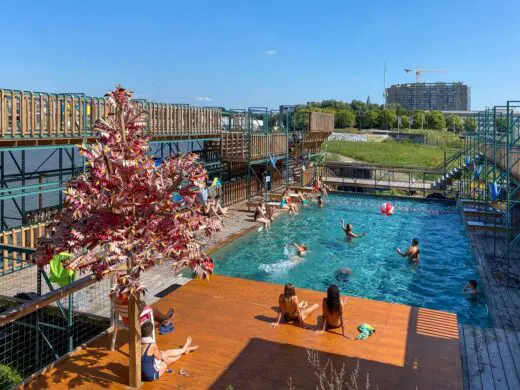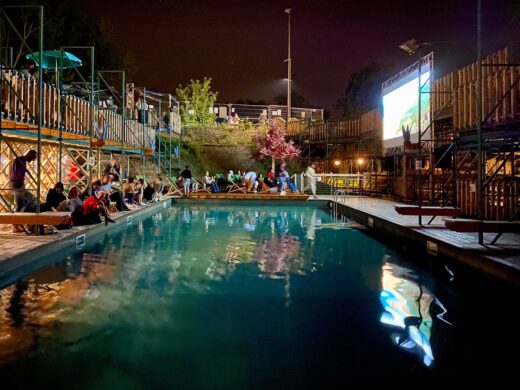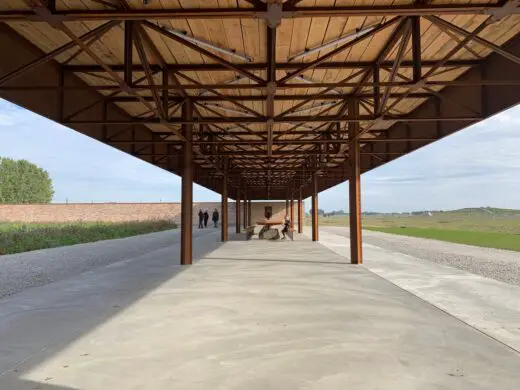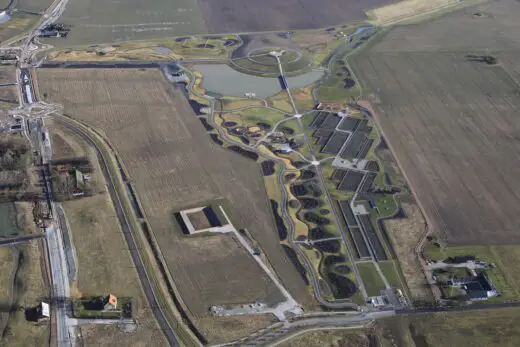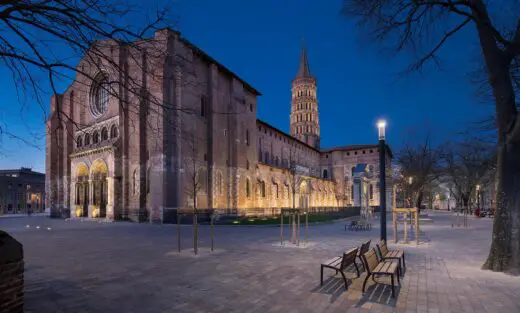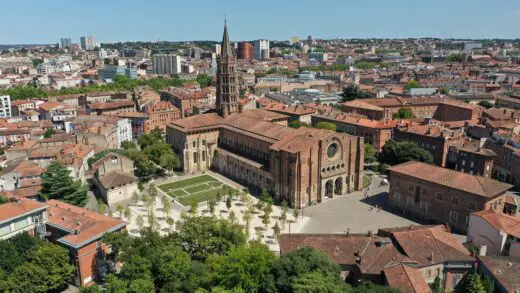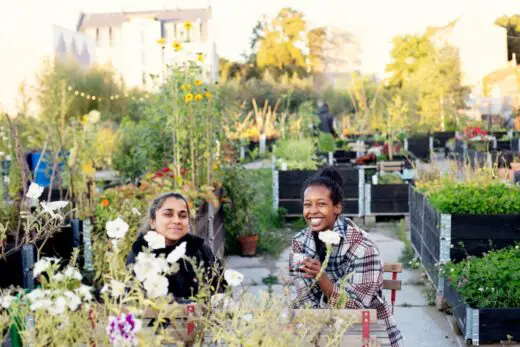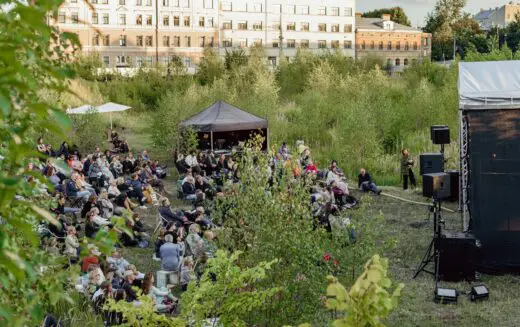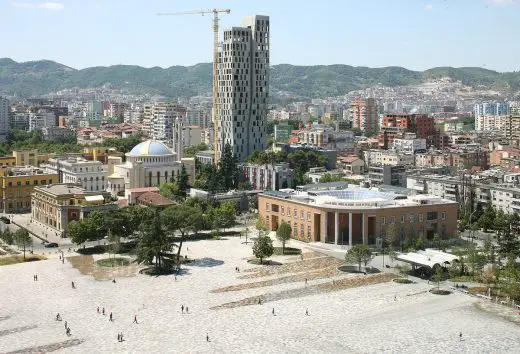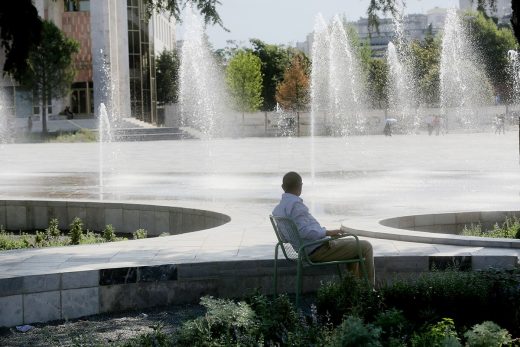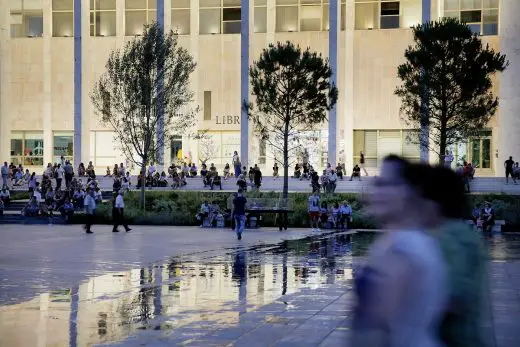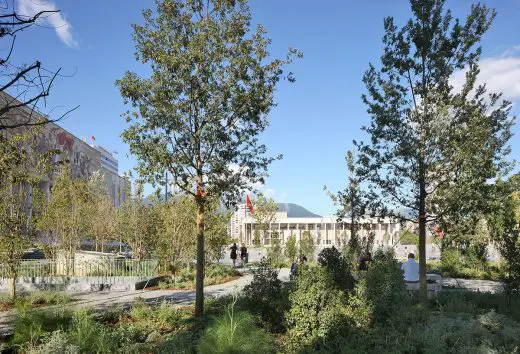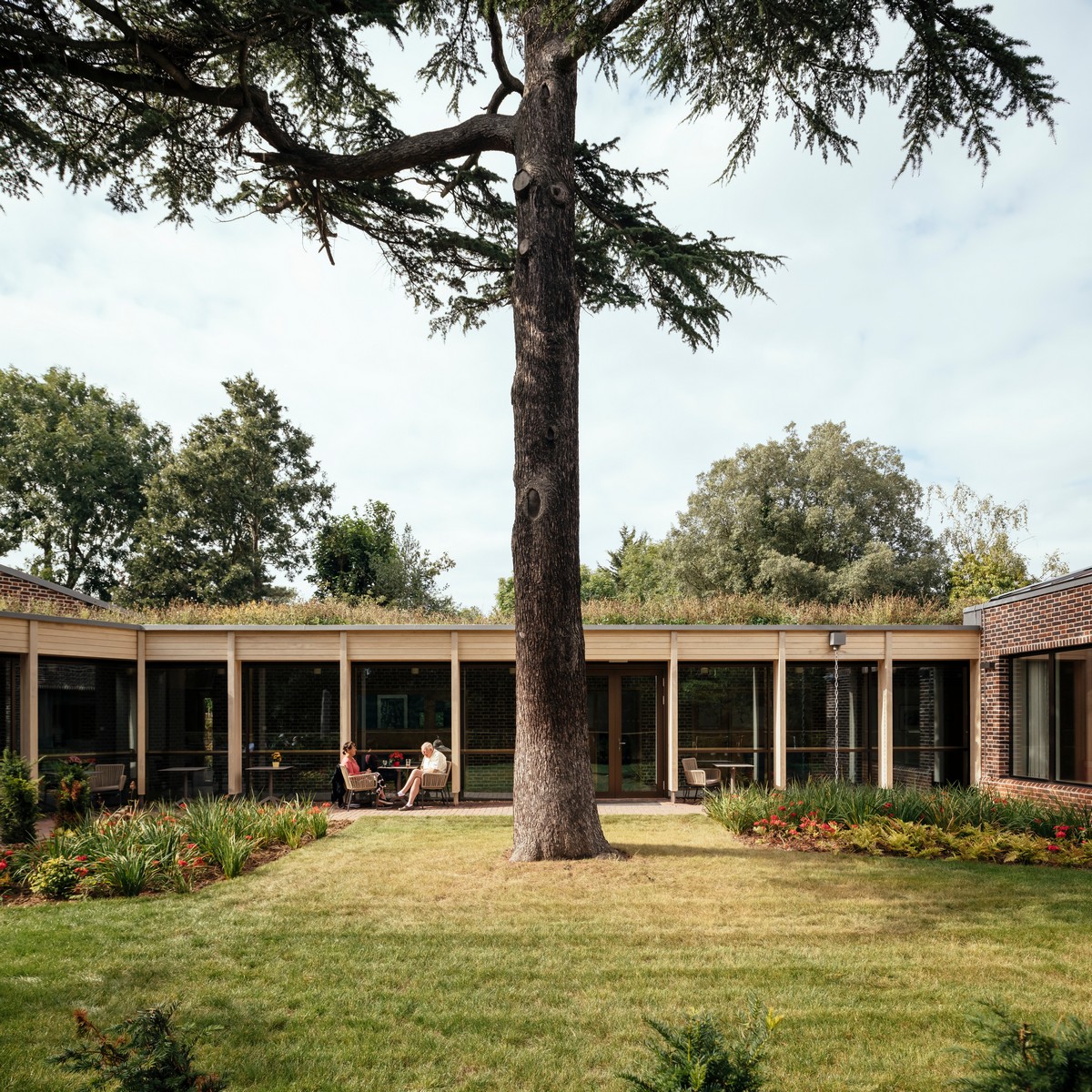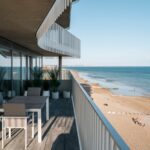2022 European Prize for Urban Public Space, Jury, Advisors, Architect Winners, Prize News
European Prize for Urban Public Space 2022 News
12 September 2022
After meeting on 14th and 15th July, the international Jury of the 2022 European Prize for Urban Public Space has chosen the 5 finalists for this year’s award. The winner will be made public at a prize-giving ceremony that is to be held at the CCCB the 14 and 15 November.
With record figures of participation –326 projects– and a high level of representation –35 countries– the Prize confirms the relevance and great importance of public space in the development of cities, in present and futurecontexts.
The European Prize for Urban Public Space is a biennial, honorific award which, since 2000, has recognised the best projects of creation, transformation, and recovery of public spaces in European cities.
European Prize for Urban Public Space 2022 finalist works
The Centre de Cultura Contemporània de Barcelona (CCCB), which closed its registration period for the European Prize for Urban Public Space 2022 on 17 May with record numbers of participation and a high level of representation. The international Jury has chosen the 5 finalists for this year’s award, which recognises works carried out between 2018 and 2021. The winner will be made public at a prize-giving ceremony that is to be held at the CCCB the 14 and 15 November.
More specifically, there have been 326 confirmed entries for the eleventh award of the European Prize for Urban Public Space, which is a significant increase in comparison with the two previous awards of 2018 and 2016, for which 279 and 276 works were presented, respectively. The countries that have presented the greatest number of works are Spain, Poland, Italy, France, and Portugal. Moreover, notable among the 35 countries represented—once again, a higher number than in previous awards—are the inclusion, for the first time, of Armenia; the return of Cyprus, Iceland, Georgia, and Latvia; as well as the participation of Ukraine.
After its deliberations at the meeting on 14 and 15 July at the CCCB (Barcelona), the international Jury—with the agricultural engineer and landscape designer Teresa Galí-Izard, who teaches Landscape Architecture at the ETH, Zurich, as its president, and consisting of Hans Ibelings, architecture critic, historian, and editor of The Architecture Observer; Eleni Myrivili, who has a PhD in Anthropology and is an advisor on Resilience and Sustainability in Athens; Andreas Ruby, director of the Swiss Architecture Museum in Basle; Paloma Strelitz, architect, creative director of Patch, and founder of Assemble, London; and Špela Videčnik, architect and founding member of the architects’ studio OFIS in Ljubljana; with the support of Lluís Ortega, architect, lecturer at the UPC, and Secretary of the Prize—has decided to select the following works:
The European Prize for Urban Public Space 2022 announces the 5 finalist works:
Finalist Works
Catharijnesingel, 2020
Utrecht, Netherlands
OKRA landschapsarchitect
The restoration of the Catharijnesingel removes vehicular traffic that occupied this street and brings back water to rewild a new public space for the city and make it accessible for cyclists and pedestrians. This project is an excellent example of revitalising the qualities of the city by means of recovering water and its biodiversity. Inspired by the environment, all the elements, including trees, vegetation, paving materials, and street furniture have been meticulously selected and envisage how nature will evolve in future. It introduces a new, natural, and healthy microclimate that will play an important role in the present situation of global climate crisis.
FLOW, 2021
Brussels, Belgium
POOL IS COOL, Decoratelier Jozef Wouters
Flow, designed and built with the participation of fifty young people, is the first open-air swimming pool to be constructed in Brussels in forty years. This project introduces a temporary structure that establishes a rich meeting place for enjoying fresh air and water. As a simple, economical, modular system that can easily be built by many hands, it presents a good example of how everyone can participate in creating an active, healthy public space.
Hage, 2021
Lund, Sweden
Brendeland & Kristoffersen architects, Price & Myers
Lund Cathedral decided to use its properties to develop a public space that would be an alternative to the logic of rapid urbanisation in its surroundings. A courtyard, closed on three sides by walls made of bricks recovered from a demolished factory building, is set in still-undeveloped land on the outskirts of Lund. The owner of the land has decided not to keep pace with the urbanising development of the area, but to let it follow its own course open to the citizens. The courtyard is a first intervention, an anticipation of a gradual evolution of the place: an hortus inconclusus.
Saint Sernin Square, 2020
Toulouse, France
BAU (Joan Busquets, Pieter-Jan Versluys), MDP (Michel Desvigne), LEA, EGIS
The project for Saint Sernin Square in Toulouse restores eminence to the historic urban fabric of the city. The cars that occupied its surface have been removed, and lost trees are reinstated as organisers of the public space. The simplicity of the proposal, its use of materials, and recognition of the heritage of the site have become the project’s mechanisms for reactivating a new, once jeopardised public space and regaining its vertical dimension and establishing an area that can accommodate a range of public uses.
“Sporta pils dārzi”urban garden in Riga, 2021
Riga, Latvia
Artilērijas dārzi
The urban community garden “Sporta pils dārzi” is the result of a popular initiative to recover an abandoned lot and becomes a new typology of public space. The project consists of a system of seedling distributions and interstitial spaces that will be occupied during events and encounters. The resulting project is a new system, a model of urban space that incorporates productive, cultural and social logics and integrates emerging natural elements as part of the community space.
Albanian Carpet, 2020
Shkodër, Albania
casanova + hernandez architects
This project restores for pedestrians the waterfront of Lake Shkodra, in the first phase of an ambitious plan for rewilding and encouraging new appreciation of this lakeshore area.
Anna Gardens in the Fuzja development, 2021
Lodz, Poland
Medusa Group
This project recovers space resulting from the demolition of disused elements of an industrial site in order to favour refurbishment of others of great architectural value.
Bakalarska Marketplace, 2021
Warsaw, Poland
Aleksandra Wasilkowska
This project allows more than 500 small businesspeople of over 20 nationalities to consolidate their activity and avert their disappearance, by means of a design that enhances spatial organisation and strengthens the area’s character as a marketplace.
Clichy Batignolles – Martin- Luther-King Park, 2021
Paris, France
Osty et Associés
A new park in a neighbourhood that has grown around an old railway station platform brings new life to the public sphere through an exemplary deployment of several ecosystems, use of water, and a range of facilities for activities and sports.
Cycling and pedestrian connection path, 2018
Esplugues de Llobregat, Spain
Batlleiroig
The new cycling and pedestrian connection, together with a landscape project, rewild the space around infrastructure and, eliminating a barrier that has been present for the last 60 years, equip a new space for meeting and association.
Exchanging Rooms, 2021
Olot, Spain
unparelld’arquitectes
This project brings new life to the urban fabric by means of an intervention that creates a civic space of a playful nature, with a touch of theatre.
Girona’s Shores, 2021
Girona, Spain
Martí Franch Batllori
A series of projects and initiatives recover, develop, and manage Girona’s neglected peri-urban spaces, to transform them into green infrastructure.
Fahle Gallery Street, 2021
Tallinn, Estonia
Kino maastikuarhitektid
The project of recovery of a space between factories as a new covered passageway for breathing new life into an abandoned industrial zone.
Gare Maritime, 2020
Brussels, Belgium
Neutelings Riedijk Architects, J. de Moffarts, OMGEVING, Sweco | Boydens engineering, Ney & Partners WOW, Bureau Bouwtechniek
This restoration of the Maritime Station reopens it to the public with a series of wooden pavilions and multiuse spaces organised as an interior city.
Cràter, 2021
Ljubljana, Slovenia
J. Buscarino, Rok, Agrodivizija, Abandoned Plants Sanctuary, Društvo za permakulturo Slovenije, Trajna, Prostorož
This project, a model for the temporary reuse of an abandoned site of 4,000m², becomes an urban laboratory for coexistence with nature.
Hot thermal fountains in Baden and Ennetbaden, 2021
Baden, Switzerland
Bagni Popolari Association
Two natural springs are turned into facilities for recovering a thermal baths area as public space in the city.
Kiosk Outsider, 2021
Ljubljana, Slovenia
Nina Granda, Matevz Granda
A small urban kiosk, designed by Jože Plečnik is recovered as an appealing space and stimulus for self-organised public programmes.
Local Activity Center, 2019
Rybnik, Poland
Marlena Wolnik MWArchitekci
This space, which activates and gives visibility to the surrounding community, which mostly consists of single-family homes, provides support for many activities, and also equips a zone that is eligible for community takeover.
Reconstruction of Koliivschyny square, 2021
Lviv, Ukraine
Urban Ideas / RUTHENIA
The restoration of this square has produced both a space for memory and an everyday meeting place.
Renaturalization of Llobregat River in its Passage Through Sallent, 2020
Sallent de Llobregat, Spain
S. Sangalli Borrego, E. Llargués Asensio, R. Garcia Llidó, A. Alcázar Del Águila
Rewilding an industrial zone in Sallent recovers the river and its relationship with the town.
Spoorpark Tilburg, 2019
Tilburg, Tilburg, Netherlands
KruitKok, Blom&Moors, Timmermans Architecture
A new urban park resulting from interaction between the community of Tilburg and a multidisciplinary team becomes an example of civic participation in defining a large-scale public space.
Ruskin Square, 2018
London, United Kingdom
muf architecture/art, J & L Gibbons
This project reflects the challenges and opportunities of public space by integrating programmatic and landscaping needs, as well as showing an ability to serve the social diversity of the place.
substandardPLUS, 2019
Bucharest, Romania
Atelier Ad Hoc Arhitectura
This project is a support facility for homeless people, with mechanisms that will avoid segregation by negotiatin between the street and the space of reception and shelter.
University of Law Paris I, Modernisation of the Lourcine Barracks, 2019
Paris, France
ChartierDalix, D&H Paysages
The new area shows the potential of any quality public space project for providing a meeting place by constructing a new urban landscape.
WolkenWerk, 2021
Zurich, Switzerland
mavo Landschaften
This transformation of an industrial area into a residential complex constructs a network of passages and interior gardens that extend the biodiversity of the zone and reduce the impact of urban heat.
+++
The winner of the eleventh award of the European Prize for Urban Public Space will be made public at a prize-giving ceremony that is to be held at the CCCB the 14 and 15 November. The 25 selected works will be published in the online Archive, which brings together the best projects presented for the Prize since it was first awarded in 2000.
European Prize for Urban Public Space 2022 Advisory Committee
Advisory Committee
The European Prize for Urban Public Space has a natural home in the European city which, despite its diverse nature, has some shared historic attributes, including a human scale, a compact design, and the mixed character of its uses. In this idea of the European city, public space plays a key role as a collective meeting place imbued with political, economic, and social values that are inseparable from a physical design that accommodates them and makes them possible.
In the 23 years of its history, and eleven awards, the Prize has received 2,532 entries and has so far awarded 19 prizes and 35 Special Mentions.
The Archive of the European Prize for Urban Public Space, an online resource, brings together the best works presented for the award since its inception. With more than three hundred experiences from nearly 200 cities, it is a witness to, and permanent observatory of the construction and evolution of public spaces throughout Europe.
The Centre of Contemporary Culture of Barcelona (CCCB)
The CCCB is a multidisciplinary cultural centre that is devoted to exploring the major issues of contemporary society through different languages and formats, with a wide-ranging programme that includes large thematic exhibitions, lecture cycles, literary encounters, audiovisual screenings, and festivals. Since its very beginnings, the CCCB has fostered reflection on contemporary cities, understanding them as a privileged space of the transformations and challenges of the world today.
European Prize for Urban Public Space – Selected Works and Finalists
Photos Copyright Information:
. Albanian Carpet> © 2020 casanova+hernandez architects
. Anna Gardens > © 2021 Rafał Tomczyk
. Bakalarska Marketplace > © 2021 Pracownia Architektoniczna Aleksandra Wasilkowska
. Catharijnesingel > © 2021 OKRA landschapsarchitecten
. Clichy Batignolles > © 2020 Philippe Guignard air-images
. Cycling and pedestrian connection path > © Batlleiroig Arquitectura
. Exchanging Rooms > © 2020 José Hevia
. Fahle Gallery Street > © 2021 Terje Ugandi
. FLOW > © 2021 Paul Steinbrück
. Gare Maritime > © 2020 Filip Dujardin
. Girona Shore’s > © 2016 Sergi Romero
. Hage >© 2021 Geir Brendeland
. Hot thermal Fountains in Baden and Ennetbaden > © 2022 Bangi Popolari
. Krater > © 2021 Amadeja Smrekar
. Local Activity Center > © 2020 Marlena Wolnik
. Kiosk Outsider > © 2021 Jana Jocif
. Renaturalization of Llobregat river in its passage though Sallent >© 2017 OASI
. Renovation of Koliivschyny Square > © 2021 Oleksandr Hutsuliak
. Ruskin Square > © 2018 Lewis Ronald
. Saint Sernin Square > © 2020 BAU
. Spoorpark Tilburg > © 2020 Blom&Moors
. substandardPLUS >© 2019 Atelier Ad Hoc
. University of Law Paris I > © 2020 ChartierDalix – Camille Gharbi
. Sporta pils darzi, Urban community garden > © 2021 Kristīne Majare
. WolkenWerk > © 2021 mavo Landschaften
Previously on e-architect:
9 February 2022
CALL FOR THE EUROPEAN PRIZE FOR URBAN PUBLIC SPACE 2022
The CCCB is announcing the call for the European Prize for Urban Public Space, a prime observatory of European cities that recognizes the best works to create, recover, transform and improve public spaces in Europe.
Agricultural engineer, landscape designer and lecturer at the ETH Zurich, Teresa Galí-Izard, will be the President of the Prize’s international jury.
Organised by the CCCB, the Prize involves the cooperation of a network of 10 architecture and urban planning institutions and over 50 experts from across the continent.
European Prize for Urban Public Space 2018 winner – Skanderbeg Square, Tirana, Albania:
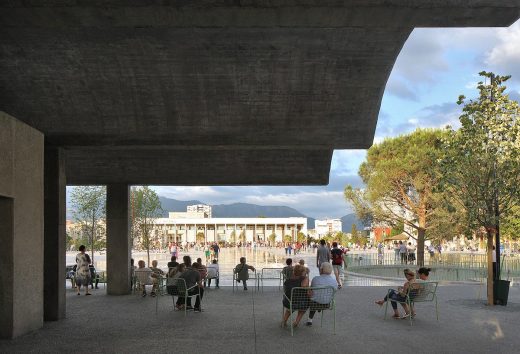
photo © Filip Dujardin
The Prize, the only one of its kind in Europe, has been renewed to promote debate about the future of European cities in the post-pandemic context.
Registration is open for submissions from 20 April to 17 May 2022. The conditions of entry and everything you need to know to take part in the Prize are available at www.publicspace.org
The Centre de Cultura Contemporània de Barcelona (CCCB) announces the eleventh European Prize for Urban Public Space. This biennial honorary contest, since 2000 acknowledging the best interventions to create, transform and recover public spaces in European cities, will recognise works carried out between 2018 and 2021.
In a context like today’s, where climate emergency and the crisis generated by the COVID-19 pandemic show that cities around the world are facing new climatic, technological and social challenges, the value of public space is greater than ever.
The Prize, which is the only one in Europe dedicated to public space and is awarded both to the authors of the project and its developers, aims to reflex the centrality of these issues and become an observatory of good practices that serves to come up with possible solutions to a future in which cities will have a primary role in defining society’s evolution.
International jury
The international jury of this eleventh edition is made up of renowned professionals from all over Europe.
President and representative of the CCCB
Teresa Galí-Izard, agricultural engineer and landscape designer, currently lectures in Landscape Architecture and is director of the Master of Sciences in Landscape Architecture at ETH Zurich, Switzerland.
Jury members
Hans Ibelings, Dutch architecture critic and historian, editor of The Architecture Observer.
Eleni Myrivili, Doctor of Anthropology, and Resilience and Sustainability advisor to Athens City Council.
Andreas Ruby, Director of the Swiss Architecture Museum in Basel and co-founder of Ruby Press.
Paloma Strelitz, British architect, creative director of Patch and founder of Assemble, London.
Špela Videčnik, architect, founder member of OFIS architects, Ljubljana, Slovenia.
Secretary
Lluís Ortega, Doctor of Architecture (Polytechnic University of Catalonia-UPC), Philosophy graduate (University of Barcelona) and Master of Science-AAD (Columbia University).
Advisory Committee
The European Prize for Urban Public Space is an initiative of the Centre de Cultura Contemporània de Barcelona (CCCB), with the collaboration of the following European institutions:
Arc en Rêve, Bordeaux, France
Architekturzentrum Wien – AzW, Vienna, Austria
ArkDes, Stockholm, Sweden
La Cité de l’Architecture et du Patrimoine, Paris, France
CIVA, Brussels, Belgium
Deutsches Architekturmuseum – DAM, Frankfurt, Germany
Eesti Arhitektuurimuuseum, Tallin, Estonia
Kortárs Építészeti Központ – Kék, Budapest, Hungary
Muzej za Arhitekturo in Oblikovanje – MAO, Ljubljana, Slovenia
The Architecture Foundation – AF, London, United Kingdom
The track record of an Award with a European and social vocation
The European Prize for Urban Public Space finds its natural space in the European city, which, despite its diversity, shares some common historical elements, such as human scale, compact design and the mixed nature of its uses. In this idea of European city, public space plays a key role in collective encounters, packed with social, economic and political values that cannot be taken apart from a physical design that accommodates them and makes them possible.
In the course of its 22 years of history and 10 editions, the Prize has had 2,206 entries and awarded 19 accolades and 35 special mentions.
The award-winning projects include such varied and relevant interventions as Barking Town Square (2008 Prize), a civic space for a suburban district in East London, which, after years of marginality, was crying out for the recovery of its lost identity and the creation of a meeting space for the new community. The open-air library in the German city of Magdeburg (2010 Prize), where, by means of a participatory process, the residents of a socially deprived neighbourhood managed to build a library with the prefabricated parts of a demolished building. The development of the old port of Marseille, France (2014 Prize), an intervention to free the docks of obstacles and vehicles, making the presence of leisure boats compatible with access for all citizens. The recovery of the irrigation channels in the thermal allotments in Caldes de Montbui, Spain (2016 Prize), giving a new lease of life to agricultural activity and creating a network of footpaths. And the renovation of Skanderbeg Square in Tirana (2018 Prize), a nerve centre in the Albanian capital and a symbolic place for the whole country that was reformed to promote and highlight its diversity, and which, with the planting of a green strip, could be a starting point for more greening in the city centre.
The Archive of the European Prize for Urban Public Space, an online consultable resource, brings together the best works submitted to the competition. With over 300 experiences in some 200 towns and cities, it is a permanent witness to and observatory of the construction and evolution of public spaces throughout Europe.
Centre de Cultura Contemporània de Barcelona (CCCB)
The CCCB is a multidisciplinary centre devoted to exploring the big questions of contemporary society, using different languages and formats, with an extensive program of large thematic exhibitions, cycles of lectures and literary meetings, audiovisual projections and festivals. Since it was set up, the CCCB has promoted reflection on contemporary cities, understanding them as the prime space for the transformations and challenges of the world today.
All photos courtesy of CCB
Location: Barcelona, Catalunya, Spain, Europe
Previously on e-architect
European Prize for Urban Public Space
2018 European Prize for Urban Public Space
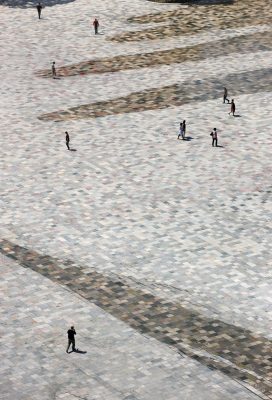
photo © Filip Dujardin
European Prize for Urban Public Space 2018
The European Prize for Architecture 2017 Winners
Architect Manuelle Gautrand
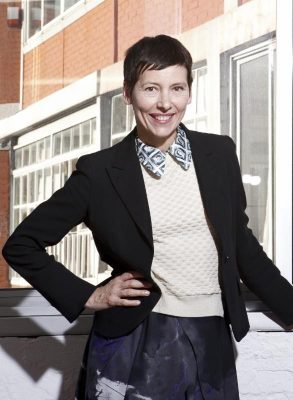
photograph : Joëlle Dolle
European Prize for Urban Public Space 2016
European Prize for Architecture
European Prize Architecture 2012
Europe 40 Under 40 Award
Europe 40 Under 40
Architecture Awards
International Architecture & Design Awards 2022
RIBA 2022 Gold Medal for Architecture
European Architecture Awards
Europa Nostra Award – winner news
European Copper Architecture Awards
European Architecture Competition : 2nd European Prize for Urban Public Space met in Barcelona
Comments / photos for the European Prize for Urban Public Space 2022 page welcome

